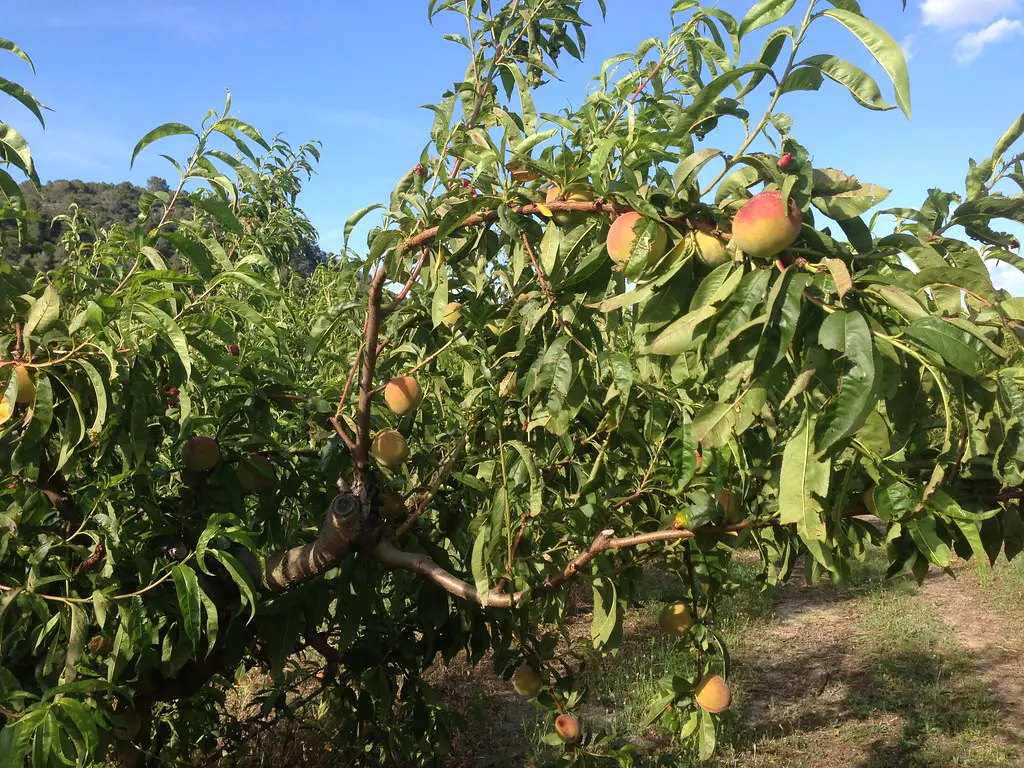Peach trees, beloved for their succulent fruit, are a symbol of renewal and life across various cultures. Originating from northwest China, peach trees have been cultivated for thousands of years and are now grown in numerous regions worldwide.
The peach tree is part of the rose family and is related to other stone fruit trees such as cherries, plums, and almonds. This deciduous tree blooms beautiful pink flowers in spring and produces juicy peaches in summer, making it both an attractive ornamental plant and a productive fruit tree.
Cultivating a peach tree requires specific care, including selecting the right location, soil type, and maintenance practices. With proper care, a peach tree can thrive in your garden, providing both shade and delicious fruit for many years.
| Aspect | Details |
|---|---|
| Common Names | Peach Tree |
| Botanical Name | Prunus persica |
| Family | Rosaceae |
| Plant Type | Deciduous tree |
| Mature Size | 15-25 feet tall |
| Sun Exposure | Full sun |
| Soil Type | Well-draining, sandy loam |
| Hardiness Zones | 5-9 |
| Native Area | Northwest China |
Peach Tree Care
Caring for a peach tree involves understanding its specific needs in terms of light, water, soil, and temperature. Like most fruit trees, peaches require regular attention to achieve healthy growth and fruit production.
The tree needs regular pruning to maintain a balanced shape and allow sunlight to penetrate the canopy, promoting fruit growth. Fertilization, pest control, and proper watering are also key components of peach tree care.
Light Requirement for Peach Tree
Peach trees require full sun to grow properly. This means they need at least 6-8 hours of direct sunlight each day. Planting your tree where it will receive adequate sun is crucial for healthy growth and fruit production.
Soil Requirements for Peach Tree
Peach trees thrive in well-draining, sandy loam soil with a pH level of 6.0-7.0. Soil testing can be beneficial in determining what amendments, if any, are needed to create the optimal growing environment.
Water Requirements for Peach Tree
Peach trees need consistent watering, especially during the first few years and in dry conditions. Drip irrigation or soaker hoses can provide deep watering that promotes healthy root development.
Temperature and Humidity
Peach trees thrive in temperate climates. They require winter chilling hours to set fruit but also need protection from late spring frosts that can damage blossoms.
Fertilizer
An annual application of balanced fertilizer in early spring can support healthy growth. Soil testing can guide the proper type and amount of fertilizer needed for your specific tree.
Pruning Peach Tree
Pruning is essential for maintaining the tree’s shape and health. Annual pruning in late winter encourages growth, improves sunlight penetration, and helps in fruit production.
Propagating Peach Tree
Peach trees can be propagated by grafting or planting peach pits. Both methods require specific care and timing to ensure success.
How To Grow Peach Tree From Seed
Growing a peach tree from a seed is a long process, but it can be rewarding. Planting the pit from a fresh peach in well-prepared soil and providing proper care can lead to a new tree in a few years.
Common Pests & Plant Diseases
Peach Tree Borer
This insect can damage the tree’s bark and wood. Regular monitoring and treatment are necessary.
Leaf Curl
A fungal disease that can cause misshapen leaves. Proper pruning and fungicide application can prevent it.
Common Problems With Peach Tree
Poor Fruit Production
Often related to inadequate sunlight or water. Adjusting care practices can remedy this issue.
Branch Dieback
Can be caused by diseases or pests. Proper identification and treatment are essential.
Blossom Wilt
A fungal infection that affects blossoms. Regular monitoring and proper fungicides can help.
Pro Tips
- Choose a variety adapted to your region for best results.
- Regularly inspect the tree for signs of pests or diseases.
- Prune to maintain an open center shape for sunlight penetration.
- Water deeply and consistently, especially during dry periods.
- Protect young trees from extreme weather with appropriate coverings.




